Ecommerce WhatsApp Marketing Guide: Klaviyo & Shopify Integration Inc
WhatsApp is the world’s most popular messenger app, with around two billion monthly active users, and counting. Especially in mobile-first countries such as in LATAM and ASEAN you will see WhatsApp all over the place. With businesses of all kinds, such as boutiques, shops, hairdressers, public toilets.. being on WhatsApp, to offer you to make your purchases or book your appointments, the WhatsApp-trend amongst businesses knows no stopping, and is slowly conquering EMEA as well.
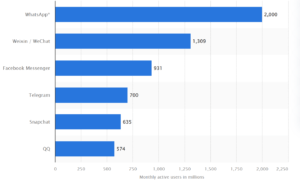
As of Q4 2024, many verticals such as “hiring”, “hotels & restaurants” or “b2b sales & hospitality” are still seeking WhatsApp use cases at scale, it is just a question of time until those will be clearly defined and vertically served by SaaS companies. The early-adopting ecommerce space has already found its use cases, and those are the ones we will fully equip you with today.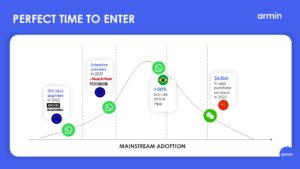
In this article, you, as an ecommerce business owner, will learn:
- how WhatsApp Marketing works and what it looks like in ecommerce
- comparison and differences between WhatsApp marketing and Email marketing
- how to pair WhatsApp marketing with email marketing
- some KPI’s that guide guide you, and how to tweak your approach as a reaction
- how to achieve RPR’s of €2,50+ through WhatsApp Marketing
- how to achieve a 50%-100% improvement in your your mobile traffic leadgen
- how to setup a passive lead generation and lead enrichment setup via Shopify & Klaviyo WhatsApp integration
- iterate your WhatsApp marketing campaigns and run A/B-tests
- best practices, do’s and dont’s of WhatsApp marketing
I am Johannes Mansbart, founder of a WhatsApp Marketing Tool for Shopify & Klaviyo D2C-Brands. We do nothing but work directly with marketing- and CRM-teams of 7-, 8- and 9-figure D2C ecommerce businesses on a daily basis. Helping them scale their WhatsApp Marketing in ecommerce. By reading this article, we try to enable you to do the same. Thanks for reading!
Introduction to WhatsApp Marketing in ecommerce: How it works!
WhatsApp marketing is very similar to email marketing, providing you the chance to generate, enrich and serve your (WhatsApp) leads. Leads will enter your private one-to-one WhatsApp chat, usually entering a pre-built welcome-automation that welcomes them and serves them with the offer or lead magnet you initially granted to channel leads into your WhatsApp chat in the first place.
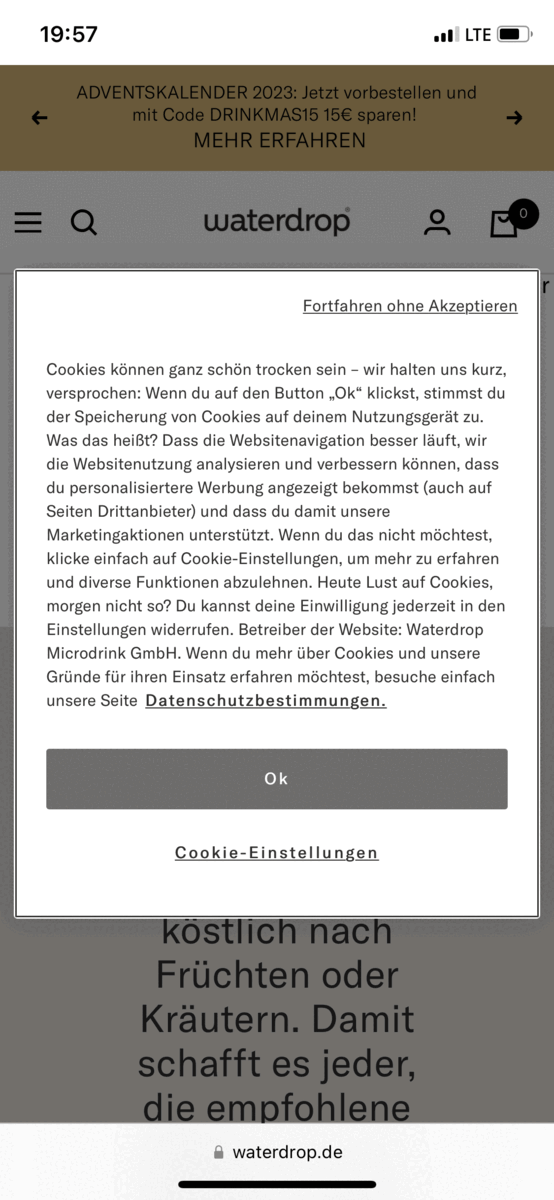
Later on, you will use those leads to retarget them via custom journeys based on their email- or shop-activity, and/or simply send WhatsApp Marketing campaigns to market your current crucial event such as a product drop, early access, discount campaign, or critical promotional days such as valentine’s day, birthdays, single’s day, black week or holiday seasons.
Differences between Email Marketing and WhatsApp Marketing for ecommerce
Email Marketing is and will remain your number one retention marketing channel. It does have some parallels and some differences to WhatsApp Marketing. Let’s check those out:
|
|
Email Marketing |
WhatsApp Marketing |
|
Double Optin |
✔️ |
✔️ |
|
Leadgen |
✔️ |
✔️ |
|
Lead Enrichment |
❌ |
✔️ |
|
Push Campaigns |
❌ |
✔️ |
|
Automations |
✔️ |
✔️ |
|
(Hyper-)personalization |
✔️ |
✔️ |
|
Integrations |
✔️ |
✔️ |
|
Revenue Tracking |
✔️ |
✔️ |
|
Interactive 2-way pushes |
❌ |
✔️ |
|
1-way pushes |
✔️ |
✔️ |
|
costs per conversation |
❌ |
✔️ |
Generally, WhatsApp Marketing and Email Marketing will have you face the same challenges operatively:
- grow and sustain a high-quality-subscriber list
- find the right balance between targeting and spamming
- stay relevant through personalization and segmentation
- integrate your channel with your shop system to keep track of your results
- be in a private and GDPR-compliant one-to-one channel with your client
- goal of direct marketing for CLTV and retention revenue maximization
The biggest difference between Email Marketing for ecommerce and WhatsApp Marketing for ecommerce is surely, that Email is more generic. Your clients are used to getting marketing messages and newsletters via Email. With WhatsApp, usually that’s not the case (just yet). WhatsApp is a private environment where your users will engage with friends and family on a daily basis. This brings a higher relevance and sensitivity to the channel, making it very important for your to segment, and personalize according to your clients’ individual needs. As a result, email marketing frequency will be way higher, whilst WhatsApp marketing relevance will go up.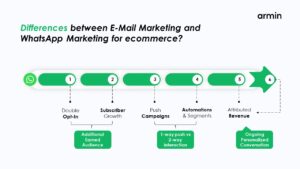
Last but not least, there is a final important difference: In email marketing, you will only have to pay your tools’ costs, and that’s it. The WhatsApp Business Platform is META’s WhatsApp API, which you will have to build your WhatsApp marketing on using a WhatsApp marketing tool. Costs for using it are defined via a “conversational pricing” that globally regulates costs, and through that, also use cases of WhatsApp Marketing. Here you can find an overview of all WhatsApp Marketing Costs
Thus, your retention-marketing-mixes’ order of frequency of engaging with your customers will look like this:
- email marketing
- WhatsApp marketing
- direct mailings
in order to prioritize through costs and also sensibility of channel.
Costs for WhatsApp marketing are billed through “24 hours conversation windows upon chatstart”, which range between €0,01 / conversation (USA) and €0,12 / conversation (Netherlands) and thus heavily depend on the origin (pre-dial-code) of your customer base. Since WhatsApp KPI’s should outperform those costs with a ROWAS (“Return on WhatsApp Spent”) of at least 1.000%, there is nothing to worry about. We will cover WhatsApp Marketing KPI’s for ecommerce later in this blog post, however, be aware that those three crucial factors will define the success of your WhatsApp marketing efforts:
- size of your business, so you have the capacity to build a WhatsApp revenue engine and the urgency to improve your CLTV and retention revenue metrics
- your product/market-fit, so, if you clearly solve a pain and have lovebrand-status so people are well-receptive to your WhatsApp marketing efforts
- product-category-type, whilst supplements will work better since they’re frequently and repetitively bought, a high-priced fashion- or lifestyle-brand will have a tougher time scaling its WhatsApp marketing efforts, since clients’ purchase cycles might be very slow and irregular
All those aspects generally play a crucial role not only for your retention marketing strategy, but overall business unit economics for your ecommerce d2c brand.
Pair your Email Marketing with your WhatsApp Marketing
We have already discussed the differences and strategical high-level-approach towards your ecommerce Email marketing and WhatsApp marketing strategy. Let’s dive into the details. In order to understand, we will dive this section into three content buckets to detect differences, parallels, and synergies, between your ecommerce businesses’ Email marketing and WhatsApp marketing strategy:
- Email and WhatsApp marketing for new customer acquisition
- Email and WhatsApp for retention marketing
- Technical Setup enabling Email & WhatsApp transparency
- Go-To-Market with your WhatsApp eCommerce strategy
New client acquisition via WhatsApp in ecommerce
WhatsApp marketing is not only a retention channel, but also serves for acquiring new customers cheaply and efficiently. “Costs pear Leads” (CPL) in new customer acquisition, for example through WhatsApp Chatstart Ads, WhatsApp Influencer campaigns or WhatsApp Brand Collaborations, can go down as much as 50-80% as opposed to Email leadgen funnels. At the same time, you can in principle A/B test all your sales channels, funnels and CTAs with WhatsApp Chatstarts to compare the results. To build a test case here, it’s best to contact the Growganic guys directly. How does that work?
Let’s have another look at the leadgen funnel via WhatsApp. Looking at the waterdrop® example above, you will miss any type of form that is to be filled out. How come? You can simply enter a WhatsApp automation by one-click-chatstart. This is how it looks like with waterdrop®: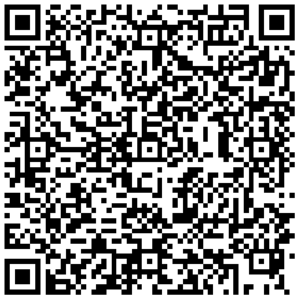
This way, leadgen improvements of up to 100% as our clients’ results prove:
The reasons for an increase in WhatsApp leads as opposed to email are:
- no inbox/delivery issues for DOI (Double Optins): Double Optins via WhatsApp have almost 100% retention and no dropoffs or inbox issues
- no form fillin: chatstart link instead a form that needs to be entered
- native mobile journey: WhatsApp is a 100% mobile user environment, which is the most natural way to engage with your mobile traffic
As you can see, there is some logical hypothesis as to why D2C ecommerce businesses can harvest 50-100% more leads from their mobile traffic than through classical email forms. More ways to leverage this effect are:
- hosting influencer campaigns via WhatsApp
- running “click-to-WhatsApp-ads” on social media
- creating giveaway experiences through WhatsApp
- offline lead gen on promotional campaigns, events and fares
Through the above leverages, brands like “Kloster Kitchen” generate up to 800 leads per influencer campaign, or brands such as “Spacies” can get up to 1.000 leads through their promotional efforts on rock and pop concerts they place their “wheel of fortune” at, which you’re invited to spin upon entering the dedicated WhatsApp welcome automation through simple chatstart click or QR code scan.
Ideally, you won’t just want to generate your lead, but also enrich them with additional information such as their email address, home address, birthday, or similar.
By integrating WhatsApp with Klaviyo & Shopify, you can make sure that even “cold” leads, that had never had a single touchpoint with your email CRM or shop before, can be synchronized through WhatsApp. Here is what it looks from a backend perspective: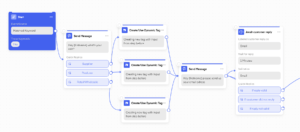
So you can integrate WhatsApp with Shopify and Klaviyo, and have virtually 100% synchronization between Chatarmin, Shopify and Klaviyo. This avoids cannibalisation between email and WhatsApp, and enables you to analyze and target your customers in a transparent way. It’s the perfect retention marketing setup.
This is how this setup looks like at a german 8-figure-beverage-brand running on Shopify and Klaviyo: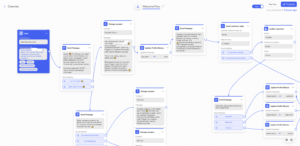
The magic of adding your WhatsApp leads to your CRM – which usually serves as your CDP as well – is, that you will be able to analyze cohorts such as
- Email only
- WhatsApp only
- Email & WhatsApp
and thus identify the incremental value that WhatsApp marketing adds to your retention longtail revenue through additional touchpoints with your cold or warm audiences. Conversion rates go up, engagement increases, revenue reaches new heights.
Moreover, it is better possible to retarget Email leads via WhatsApp, thus making use of strong WhatsApp marketing KPI’s, whilst not “overspending unnecessary budgets” for leads that could or would otherwise already “convert for free” via Email.
Retention Marketing via WhatsApp: 25% CLTV improvements in ecommerce
WhatsApp marketing for retention aims at incrementally improving your current “CLTV” (Customer Lifetime Value) and can therefore be used – alongside email marketing – as a relevant marketing channel for addressing existing customers. We practically recommend to start adding WhatsApp marketing to the retention marketing mix as soon as
- your email marketing setup is well done
- you average above €100.000 in monthly revenue
- you have the operative capacity to setup your passive WhatsApp leadgen as well as the occasional WhatsApp Marketing campaign
In order to scale WhatsApp in a GDPR-compliant way, a solution such as my company “Chatarmin”, which was programmed on the basis of the “WhatsApp Business Platform”, is required.![]()
We recommend to strive for the following WhatsApp marketing KPI’s when it comes to using WhatsApp as a retention marketing channel:
- RPR: Min Revenue per Recipient (€2,00-€2,50)
- ROCS: Min Return on Campaign Spend (1.500%-2.500%)
- Min CTR: Click-through Rate (15-20%)
- Min Open Rate (85-95%)
- Opt-out Rate (0.3-0.6%)
If your KPI are averaging lower than that, you should try personalizing more and segment better. If your KPI’s are way better than that, feel free to scale more by adding use cases and campaigns.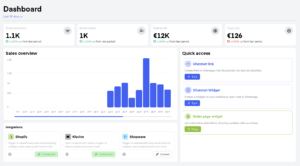
Theoretically, infinite welcome journeys can be created, which can also communicate and interact with other systems, such as your shop system or email marketing CRM, through Chatarmin’s API integrations.
Postpurchase journey, Shopify & Klaviyo Webhooks for your WhatsApp flows
You can trigger WhatsApp flows not only on Shopify webhooks, but also Klaviyo in-flow webhooks or Klaviyo events, filtered on Klaviyo event properties if desired. This enables (hyper)personalized WhatsApp postpurchase journeys based on.
This way, you can double your existing clients’ leads, by either creating your curated post-purchase journey, including User-Generated-Content, surveys, and also cross- and upsales to your clients’ postpurchase WhatsApp journey.
Or, you offer your clients to send them your shipping update as soon as their parcel went out, thus, serving them with value by letting them know order updates and order status via one-click through WhatsApp. As you can see in the “Thank-You-Page-Widget-Screenshot” below: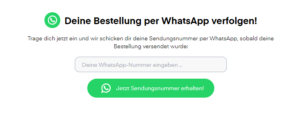
Chatarmin’s Thank You Page Widget allows customers to request shipping info via WhatsApp on your thank you page right after they’ve completed their purchase. This works almost as well on desktop as on mobile. Existing customer leads of 20-40% are the result, which can correspond to a CLTV uplift in long-tail revenue of 15-25% and more.
Retarget abandoned browse, abandoned carts and abandoned checkouts via WhatsApp
What D2C businesses successfully do via WhatsApp, is retargeting abandoned clients throughout their purchase journey. Let’s look at an example below:![]()
ecommerce businesses retarget abandoned user journeys via WhatsApp, on top of email. The only question is, whether you want your first cold touchpoint with your new clients to be via abandoned checkout automations. First, you will have a privacy topic here, second, it might not be the best first touchpoint you’d want to have with new clients. However, this one is easily solved via if/else logics in your WhatsApp Flow Builder. Some ecommerce businesses will simply leave out some client cohorts from abandoned checkout or abandoned cart automations, so only previously-opted-in WhatsApp leads get the recovery campaigns, for example.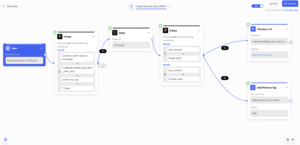
This way, you can control your users’ journey, control when to add WhatsApp Marketing to your clients’ experience with your brand, and ultimately make use of your
- WhatsApp lead generation
- WhatsApp lead enrichment
- WhatsApp campaigns
- WhatsApp flows & automations
- WhatsApp integration with Shopify & Klaviyo
just the way you want.
Practical guidelines on the right WhatsApp Marketing Strategy for your ecommerce business
After your successful WhatsApp lead generation, we recommend that you consider using WhatsApp campaigns to reach your existing customers if one of the following use cases applies:
- New product launch
- Early Access
- Secret Sale
- Special day
- Valentine’s Day, Mother’s Day, Christmas etc.
- Black Friday & Cyber Monday
- Company anniversary
- Birthday of your customer or their loved ones
- Sunset Flow via WhatsApp
On average, these occasions give you about 10-20 opportunities to send out really important WhatsApp campaigns to your existing customers, ideally assuming some segmentation, and ideally aligned with your customers’ Klaviyo and Shopify engagement.
Using an ecommerce-focused WhatsApp Marketing Tool, you can track and analyse WhatsApp marketing campaign KPI’s like Opening Rates (OR), Click Through Rates (CTR) and Revenue per Recipient (RPR).
This way you create a retention marketing strategy that is not only based on email, but your long-tail retention revenue is based on two solid pillars – email marketing and WhatsApp marketing.
Meanwhile, many email marketing agencies turn into “retention marketing agencies” also offering WhatsApp marketing operatively.
Improve your ecommerce WhatsApp marketing through A/B tests
As you start your new WhatsApp Marketing strategy, you will naturally make some mistakes in the beginning. Your learning curve will be extremely steep, and over time, you will understand and improve your winning WhatsApp-Marketing-Formula. In order to get better and better with your WhatsApp Marketing approach, we recommend you to:
- A/B-Test all campaigns and flows regarding assets, fotos, videos, emojis, short- and long-form
- A/B-Test funnel entries for conversion rate improvements
- A/B-Test lead enrichment to identify dropoffs and how much “information collection” is feasible for your clients
This is how a ChatGPT-feedbacked-WhatsApp-Marketing-Campaign A/B-Test looks like for an 8-figure-D2C-brand from Austria, running on Shopfiy and Klaviyo: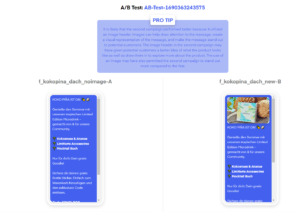
A/B-Testing your Campaigns only makes sense from an audience of at least 4.000-5.000 WhatsApp leads so that you get statistically relevant results. – Christoph Böcker, Founder, CRO-agency “growganic”
Next to WhatsApp campaign A/B-testing, it will make a lot of sense to keep track of your WhatsApp flow-metrics, in order to identify conversion-rate-killers along your customer journey, as well as lead enrichment dropoffs so you identify and structure your most efficient WhatsApp automations.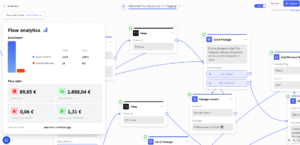
However, experience shows that this only makes sense from 1,000 orders/month, as you need a certain statistical significance to evaluate the results.
Also, it is important for you to define what role your WhatsApp automation plays:
- retargeting dormant clients
- retargeting recent purchasers
- provide shipping info as a value proposition for lead collection
- running a giveaway to collect cold phone numbers
- enriching clients as much as possible for 100% data overlap with Shopify & Klaviyo
- pure upfront revenue at the first touchpoint
..and optimize the journey as well as klaviyo-enrichment along the way. What can also help to get to 100% data sync, is to regularly scrape the shopify and klaviyo history of your already-existing-clients, as well as ask them organically to enrich their information to be even closer to your brand.
Best Practices, Do’s and Dont’s of your ecommerce WhatsApp Marketing. Your start into WhatsApp marketing for your ecommerce business
Finding a WhatsApp use case is the basis to start with WhatsApp marketing at all. You should already fulfill these conditions:
- Website traffic of at least 10,000 visitors/month
- Minimum revenue of €250,000.00/year
- Shopify, Shopware and/or Klaviyo Techstack
- Solid email marketing setup
- growth case ready to scale
If you meet all these points, feel free to ask yourself the following questions:
- What are my problems in the user journey?
- Do I have a new customer or existing customer problem?
- Do I need help with new customer acquisition or retention marketing?
- Where is my funnel “breaking”, where is my user journey “inefficient”?
Next, think about why you have conversion rate dropoffs, or why your lead gen or lead conversion is not working. Then, think about whether it’s the product, the UI/UX of the user journey, or the communication channel. If you believe that WhatsApp can help and improve the situation, feel free to contact us at Chatarmin.
If you are an online shop that wants to bring WhatsApp, Klaviyo and Shopify in line, and you already have over a million euros in annual sales:
- Look at your CVR by customer cohort.
- Look at your New Revenue:Retention Revenue metrics.
- Analyze 30d, 60d, 90d and 180d repurchase rates
- View your Abandoned Checkout Recovery Rate by email
- View email opening rates for the above user cohorts
If you see potential here, it definitely makes sense to look at WhatsApp Marketing for Shopify & Klaviyo D2C Brands via Chatarmin.
